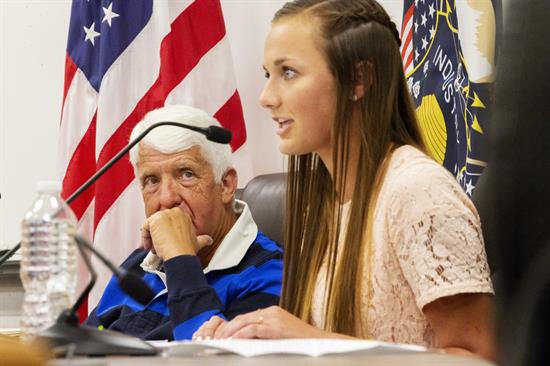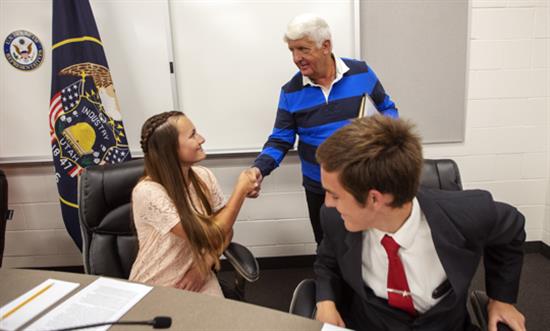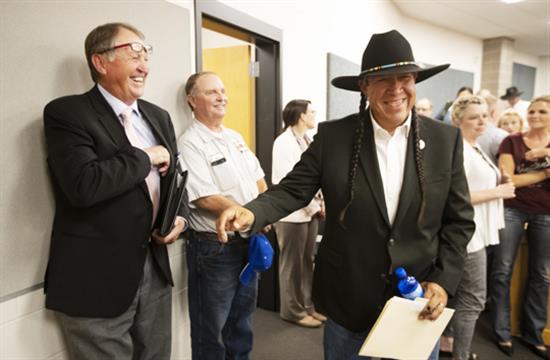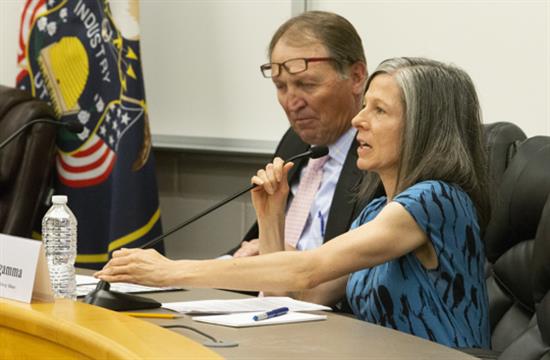In Case You Missed It
ICYMI: Residents Tout Link Between Utah Education Dollars and Energy Economy
WASHINGTON, D.C.,
August 30, 2018
|
Committee Press Office
(202-225-2761)
Tags:
Full Committee
By: Amy Joi O’Donoghue Deseret News
Union High School senior Annalee Birchell testified in a congressional field hearing Wednesday about growing up in an energy town with generations of educators and miners in her family. "I am the product of two career fields: education and energy. I am a fourth-generation descendant of men who settled the Uinta Basin and worked in the gilsonite mines for many years. I am also the descendant of many generations of educators, from elementary school up to college professors," she said. "I have seen the influence of both of these careers. They correlate. One cannot work without the other." Rep. Rob Bishop, chairman of the House Committee on Natural Resources, convened a field hearing in this small oil town to gather testimony about the nexus between energy development and dollars for education.
The hearing was held at Union High School, where teacher and coach Jeff Hanke described the symbiotic relationship between the two. "For centuries, subsistence for the lives of Uinta Basin has been dependent upon resources of the natural environment. Mining and onshore energy natural resources found within the basin provide opportunities for employment and community sustainability," Hanke said. Officials expect about 80 percent of the costs of the new Union High School came from energy development dollars, with the industry also pitching in to help put a new infield at the local baseball field. In fiscal year 2017, Utah received just over $73 million from onshore energy production on federal lands, money used to pay for associated impacts and to develop infrastructure. Over the years in Duchesne County, those dollars helped establish a cooperative arrangement between the energy industry and the secondary education system, Utah State University and the Uintah Basin Technical College. But Bishop and top elected officials often bemoan the extent of federal land ownership in Utah and other states in the West and assert it puts states at a distinct funding disadvantage when it comes to public education and other needs. "One of the complexities of producing oil and gas in the Uinta Basin is the regulatory uncertainty of operating on federal and tribal lands," said Ron Winterton, chairman of the Duchesne County Commission.
But Ute Tribal Councilman Shaun Chapoose said during the hearing that the federal government is not the boogeyman causing Utah's education funding problems. "Utah must stop blaming the federal government and federal lands for an issue that we can solve locally," he said. "In addition to having the lowest per student spending, Utah has one of the lowest property tax rates in the United States." Chapoose said Utah lawmakers need to address that funding woe by directing more dollars to education. Local jurisdictions need to step up and increase taxes as well, he said. Dave Ure, director of the Utah School and Institutional Trust Lands Administration, said a critical connection exists between education and energy development — but it is not one that people often admit exists. Across the country, there are about 30,000 wells that exist on school trust lands. Ure said industry is banging on the administration's doors because it does not face the same permitting hurdles as it does with the federal government. There are several rule changes and congressional proposals to address the delays in federal oversight of energy production, but it remains to be seen how those will play out on the ground in energy rich areas like the Uinta Basin. Critics of fossil fuel production say any rollback of federal oversight or a handoff to states for more involvement would lead to destructive environmental consequences.
But Kathleen Sgamma, president of the Western Energy Alliance, said something needs to change in the review process under the National Environmental Policy Act. She said there were several projects that spent five, eight or even 10 years in that review process because the previous administration "sat" on the energy development proposals. EOG Resources delayed its Greater Chapita Wells Project in the basin, pulling back the environmental analysis because after the years of delays, the technology dictating how that project would play out changed, Sgamma said. "They spent nine years and millions of dollars only to have that go by the wayside," she said. The project promised $1 billion in state revenues over its lifetime, she said. Bishop will wrap his public meetings in Utah on Thursday, with a 3 p.m. forum at the state Capitol on wildland fires. ### |
Newsletter Sign Up
Sign up to receive news, updates and insights directly to your inbox.




